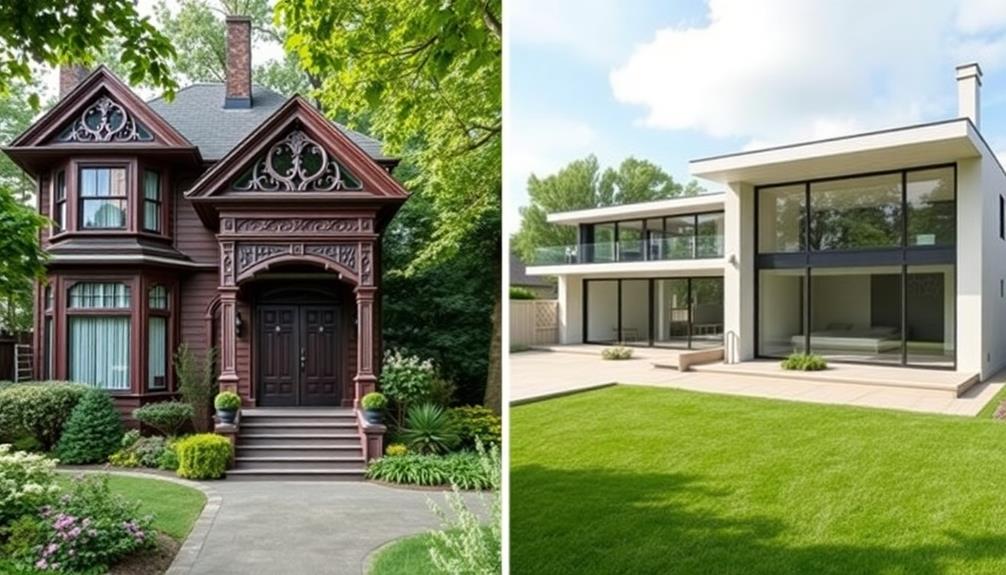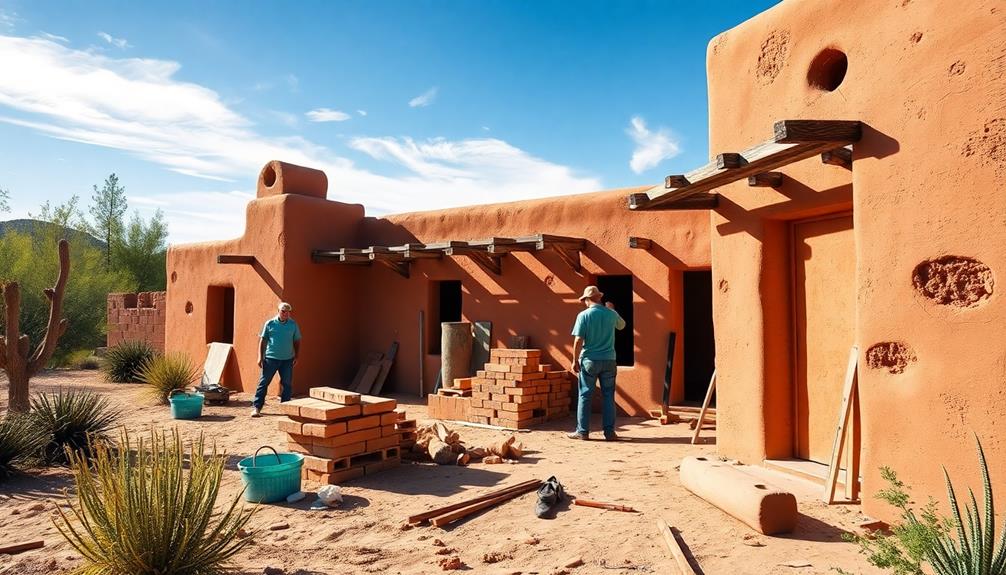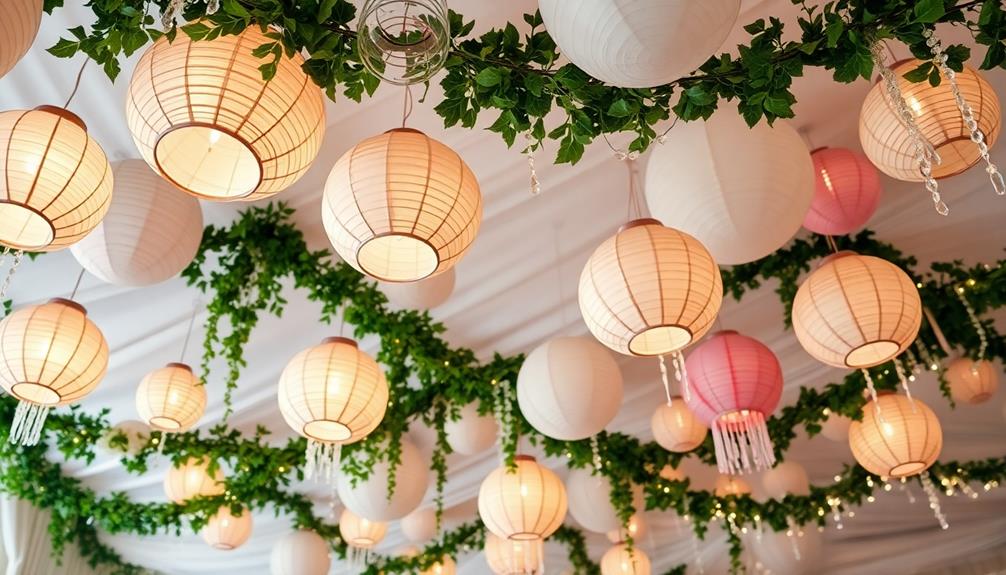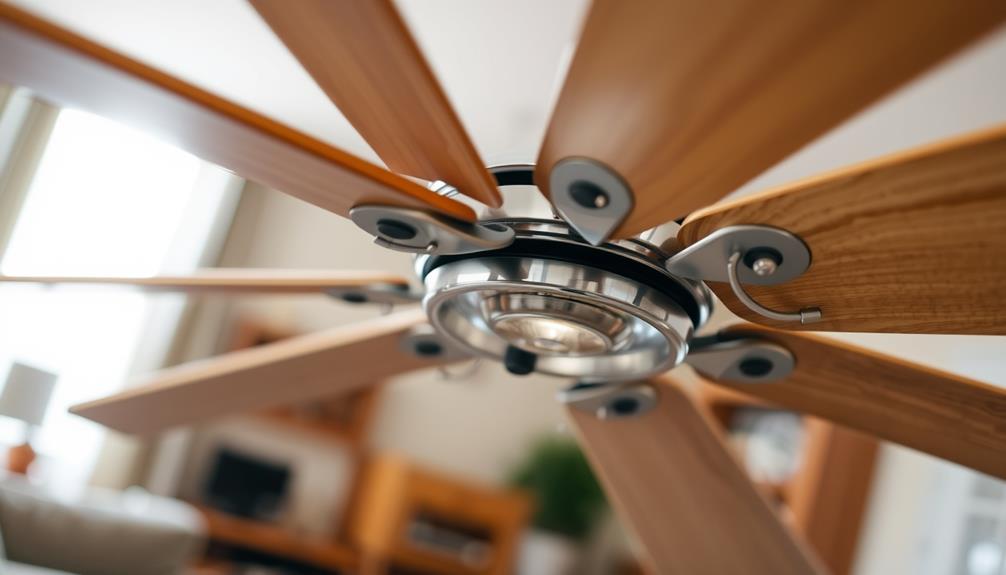When you compare old and modern homes, you'll notice striking differences in design, technology, and durability. Older homes, rich in history, feature intricate details and craftsmanship, while modern homes prioritize clean lines and functionality. You'll find that modern properties incorporate smart technology, energy-efficient appliances, and superior insulation, making them cost-effective in the long run. In contrast, older homes might need updating to match these amenities. Additionally, the structural integrity of modern homes benefits from advanced materials and stringent building codes, offering enhanced stability. Exploring these differences can help you decide which style suits your lifestyle best.
Key Takeaways
- Traditional homes feature intricate craftsmanship and distinct room layouts, while modern homes emphasize open spaces and minimalistic design.
- Modern homes incorporate smart technology and energy-efficient appliances, enhancing convenience and reducing utility costs compared to older homes.
- Structural integrity is generally superior in modern homes due to reinforced materials and adherence to current building codes, minimizing maintenance needs.
- Roofing materials have evolved, with modern options offering better durability and energy efficiency compared to older wood and slate roofs.
- Aesthetic preferences vary, as older homes showcase historical charm and craftsmanship, while modern homes focus on innovation and functional simplicity.
Architectural Style Differences
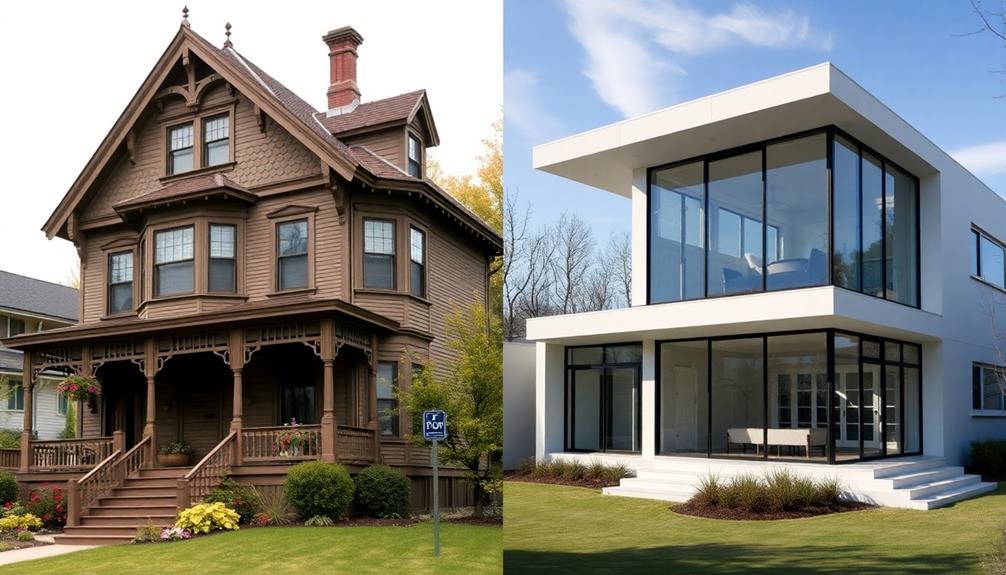
When you step into a traditional home, you're often greeted by intricate details and distinct room separations that showcase styles like Victorian, Colonial, or Craftsman.
These homes emphasize craftsmanship, with ornate moldings, rich woodwork, and unique architectural features that tell a story of their era.
In contrast, modern homes focus on clean lines and simplicity, prioritizing functionality and open spaces.
You'll notice the use of industrial materials like steel and concrete, reflecting a shift towards sustainability and efficiency.
Additionally, modern farmhouse designs incorporate natural materials like wood and stone, blending rustic charm with contemporary aesthetics.
While traditional homes evoke nostalgia and historical charm, modern designs cater to contemporary lifestyles and preferences.
The evolution in architecture mirrors societal changes, highlighting the ongoing dialogue between the past and present in home design.
Technology and Amenities Variances
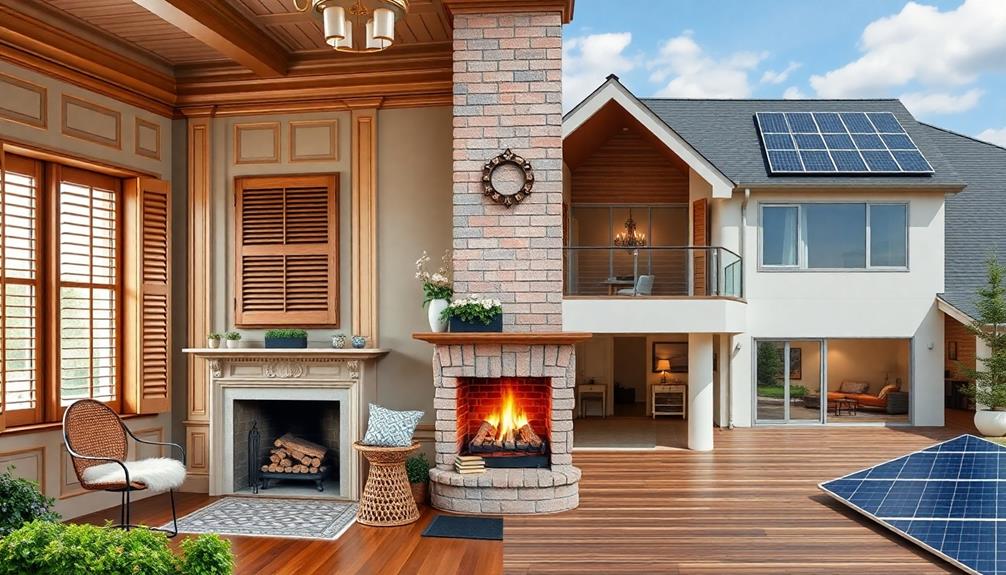
In today's world, technology and amenities play an essential role in defining the comfort and convenience of a home. Modern homes often come equipped with smart home systems, allowing you to control lighting, security, and climate effortlessly.
Additionally, energy-efficient appliances, such as those from Samsung Appliances, are standard, reducing utility costs and environmental impact. You'll find features like central heating and smart thermostats that help maintain ideal temperatures. High-speed internet is a given, enabling seamless connectivity.
In contrast, older homes may lack these conveniences, often requiring retrofitting to accommodate modern technology. Upgrading older houses can enhance comfort and energy efficiency, but it often involves time, effort, and expense.
Ultimately, technology greatly enhances your living experience in a modern home compared to a traditional one.
Structural Integrity Comparisons
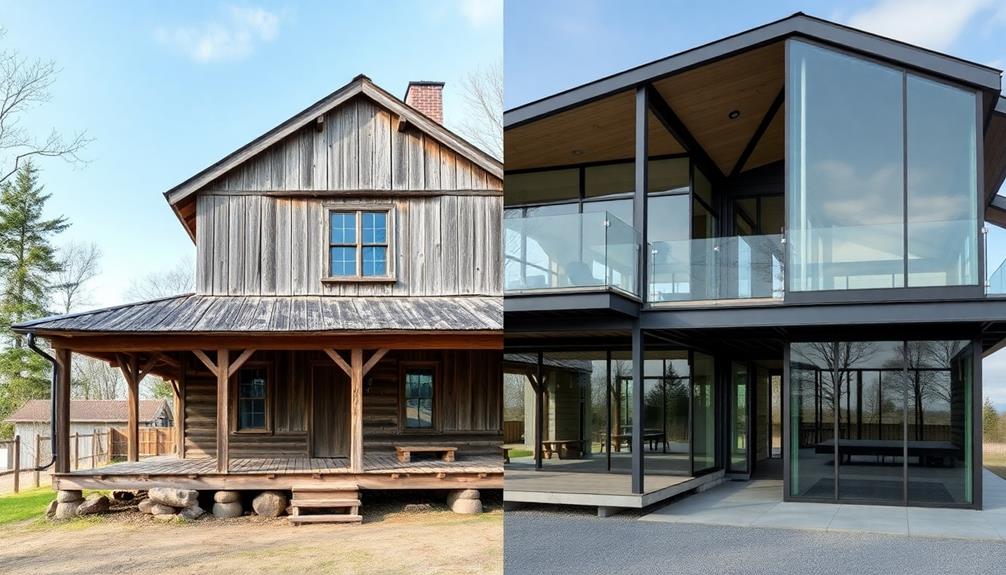
Although older homes often carry charm and history, their structural integrity can raise concerns. When you consider the materials and methods used in construction, you'll find that older houses may have weaker foundations and outdated techniques. These homes are often more susceptible to settling, cracks, and decay, which can impact your safety and comfort.
Additionally, incorporating modern home security systems can provide added protection against potential threats.
In contrast, modern homes utilize reinforced concrete and steel, providing enhanced durability. They adhere to stringent building codes, greatly increasing safety and reducing the risk of structural issues.
By choosing a modern home, you're investing in a property designed for longevity, minimizing maintenance needs and ensuring a more stable living environment.
Ultimately, the structural integrity of your home plays an essential role in your overall satisfaction and peace of mind.
Foundation Strength Analysis
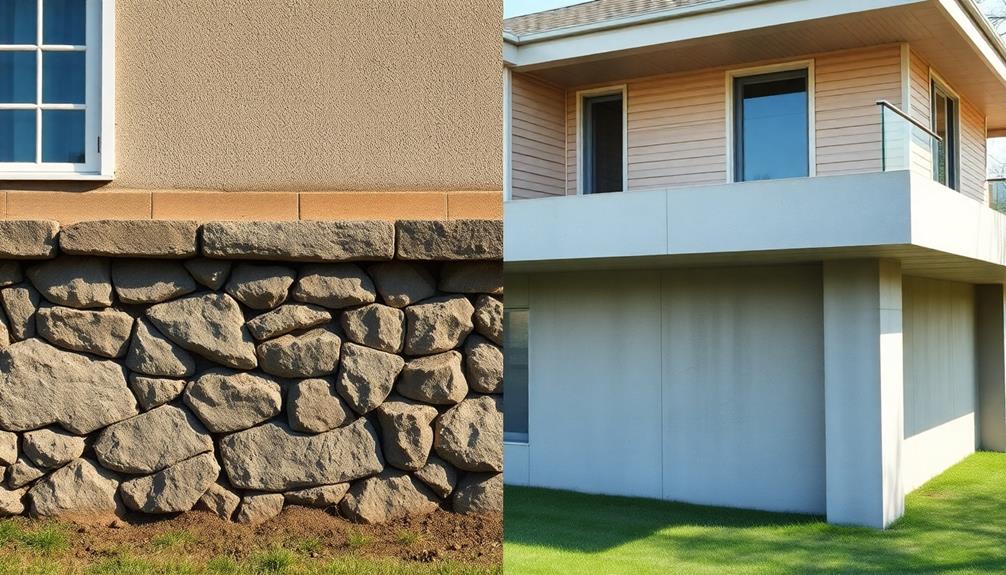
Building on the importance of structural integrity, the foundation strength of a home greatly influences its overall durability and stability.
When you compare old and modern homes, you'll notice considerable differences in foundation materials and construction techniques.
Consider these key points:
- Modern foundations use reinforced concrete and steel for superior strength.
- Traditional foundations often consist of stone, brick, or wood, which may weaken over time.
- Higher standards in modern construction lead to increased long-term stability.
- The risk of structural problems is greatly reduced in modern foundations.
Roofing Materials Evolution
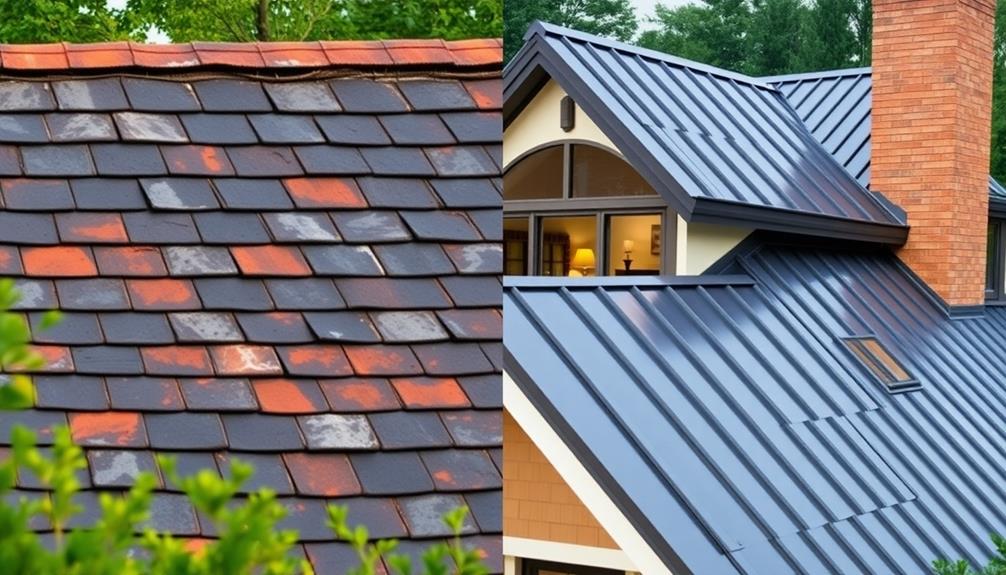
As roofing materials have evolved over the years, modern options now offer significant advantages over traditional choices.
You'll find that today's roofs often incorporate asphalt shingles, metal roofing, and even solar panels, enhancing both durability and energy efficiency. In contrast, older roofs typically used wood shingles, slate, or clay tiles, which can be less resistant to harsh weather conditions.
Modern roofing materials are designed to withstand extreme elements, reducing the likelihood of leaks or damage. Additionally, advancements in technology have led to lighter, more manageable materials that simplify installation and maintenance.
Energy Efficiency Comparison
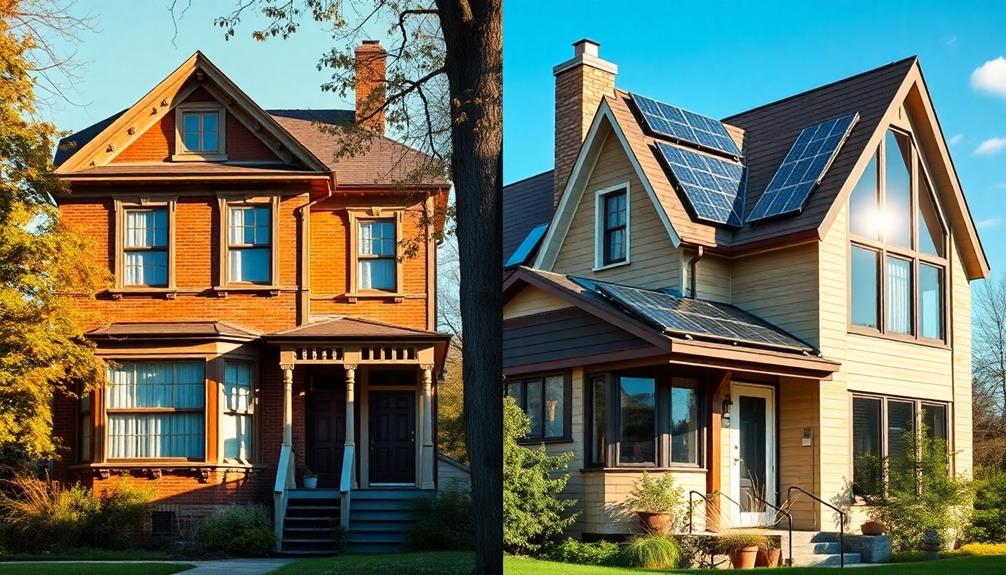
Improving energy efficiency has become a top priority in modern home design, setting it apart from older residences.
Modern homes often feature superior insulation and energy-efficient appliances that greatly lower utility bills and reduce environmental impact. In contrast, older homes may lack these advancements, requiring retrofitting to catch up.
Here are some key differences in energy efficiency:
- Insulation: Modern homes use advanced materials for superior thermal performance.
- Appliances: Energy-efficient models are standard in contemporary houses.
- Sustainable Practices: Modern designs often incorporate eco-friendly features.
- Smart Technology: Smart thermostats and systems optimize energy use.
Choosing a modern home means embracing these innovations while enjoying long-term savings and a smaller carbon footprint.
Aesthetic and Functional Differences

There's something fascinating about the aesthetic and functional differences between old and modern homes. When you step into an older home, you're often met with intricate details and craftsmanship that tell a rich story. These traditional designs evoke a sense of history and character. On the other hand, modern homes embrace sleek and minimalistic designs, often prioritizing functionality and efficiency. The clean lines and open floor plans create a sense of spaciousness and simplicity. However, many homeowners are finding ways to incorporate elements of traditional design into their modern homes, experimenting with retro style decor ideas to add a touch of charm and nostalgia to their living spaces.
In contrast, modern homes focus on innovation, emphasizing open floor plans and versatility, which caters to today's lifestyle needs. You'll notice sleek lines and minimalistic aesthetics that prioritize function over form.
While older homes may charm you with their unique architecture, modern spaces often provide the convenience of smart technology and energy efficiency. Ultimately, your choice reflects your personal taste and how you want your living space to serve you.
Frequently Asked Questions
What Are the Maintenance Costs for Old Versus Modern Homes?
When considering maintenance costs, older homes often require more frequent repairs and updates, while modern homes typically need less due to better materials and technology. You'll find that investing in modern properties can save you money long-term.
How Do Insurance Rates Differ for Older and Newer Homes?
Insurance rates often differ considerably between older and newer homes. You'll typically find lower premiums for modern homes due to updated safety features and building codes, while older homes may face higher rates due to potential risks.
Can Older Homes Be Retrofitted to Match Modern Standards?
Imagine an old tree, strong yet weathered. You can nurture its roots, adding modern branches and leaves. Yes, older homes can be retrofitted, blending classic charm with today's standards for comfort and efficiency.
What Are the Resale Values for Old Versus Modern Properties?
When considering resale values, modern properties typically fetch higher prices due to their energy efficiency and updated amenities. However, older homes can attract buyers seeking character, potentially leading to competitive offers depending on location.
How Do Neighborhood Dynamics Differ Between Old and Modern Homes?
Isn't it ironic? You'd think neighborhood dynamics would be the same, but they're not. In older areas, you'll find charm and history, while modern neighborhoods often prioritize convenience and community amenities, shaping different lifestyles.
Conclusion
In the end, whether you're drawn to the ornate charm of an old Victorian or the sleek lines of a modern abode, each home tells its own story. These architectural styles, like two sides of a coin, reflect your unique tastes and lifestyle. Embracing both the history and innovation in home design allows you to find beauty in the old and the new, proving that every dwelling is a canvas painted with personal preference and societal evolution.
